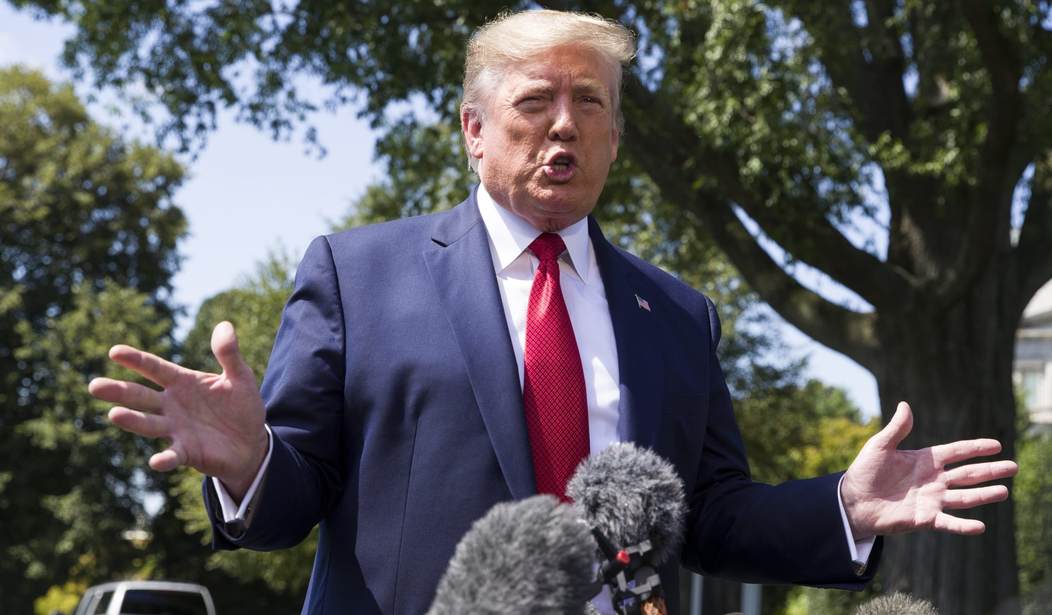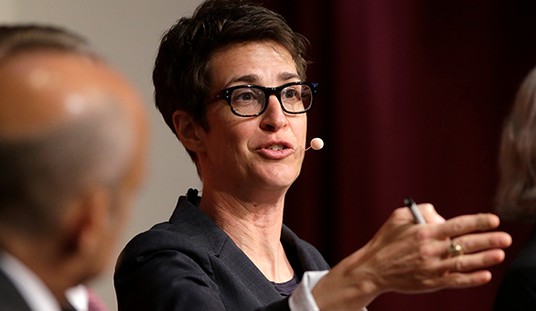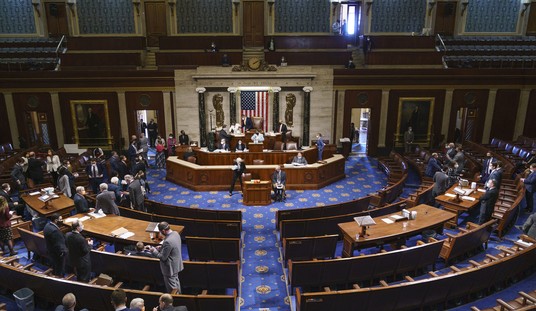Wars happen because the opposing sides have different views of the likely outcome. In the case of wars between Asians and the West, the West chronically underestimates the Asians. The Romanov Dynasty fell in large part because it lost its entire fleet in two catastrophic engagements with Japan’s Imperial Navy, at Port Arthur in 1904 and the Tsushima Strait in 1905. Britain would have lost the whole of its Asian Empire to Japan after the fall of Singapore in February 1942, except for the United States. Just before Singapore fell, Churchill told a journalist (as Andrew Roberts reports in his new Churchill book) that the Japanese were “the wops of Asia” and would fold like the Italians. Never before in the course of human events did such a smart man say anything so stupid.
So at the risk of spending the next month dodging rotten eggs and ripe tomatoes, I’ll say it: The way things stand, we’re going to get our heads handed to us, and President Trump’s chances of re-election will drop considerably. I’m a Trump supporter, and I want him to be re-elected, but I think he’s walking into a Chinese trap. Remember, Xi Jinping doesn’t have an election in 2020.
Today’s announcement of Chinese tariffs on $75 billion of U.S. goods and President Trump’s promise of retaliation may mark a turning point. China has taken the offensive. In fact, it did so August 6 when it allowed the RMB to depreciate to less than 7 RMB per U.S. dollar, as I explained in an Asia Times analysis at the time (below).
China appears to believe that it can win a trade war against the United States. Of course, no-one wins. Both sides lose. The question is how each side deals with the consequences of losing. For the past year, I’ve argued that the time is long past when the U.S. can inflict sufficient pain on China to impose our will. Since the 2008 crisis, China has been shifting its economy toward the home market and away from exports. Only 5% of its manufacturing now goes to the U.S., and most of that is on the low end of the value-added spectrum. When President Trump tweets that we don’t need China, by contrast, he appears unaware of the vast network of specialized manufacturers, skilled engineers and workers, and suppliers that produce the computers and consumer electronics we buy from China. You can’t wave a magic wand and replace twenty years’ worth of investment and training.
Every Mainland Chinese in a position of influence whom I’ve spoken to in the past several weeks tells more or less the same story:
- China has 1.4 billion people and has a domestic market big enough to replace most of the demand lost in a trade war;
- China has become self-sufficient in virtually all the important technologies it needs to dominate high-tech manufacturing as well as advanced computation;
- Washington’s failure to dissuade its allies from buying Huawei’s 5G mobile broadband technology shows that China can’t be stopped.
Trump touched a tripwire last week, moreover, when he linked the trade negotiations to “humane” treatment of the Hong Kong demonstrators. The Chinese think the U.S. is behind the demonstrations and suspect the worst.
U.S. manufacturing, meanwhile, shrank in July for the first time in 10 years, according to the Markit survey of purchasing managers. Manufacturing has shrunk year-on-year, according to the Federal Reserve’s index. That can’t be good for the president’s re-election prospects. He won by carrying the Upper Midwest, and made the restoration of U.S. manufacturing a central commitment of his administration. The U.S. economy is still growing because consumers are spending, but the more they spend, the more we import from China. Consumer demand has NOT supported U.S. manufacturing.
Tariffs are the wrong way to restore U.S. manufacturing (except in special cases, where they are a useful micro-management tool). The right way is to concentrate federal funds on frontier R&D in game-changing technologies and reserve federal education subsidies for engineering and the sciences, as JFK and Reagan did.
Trade wars part two – the empire strikes back
The escalating conflict between China and the US will likely be long and debilitating
Today’s stock market crash announces a new and dire phase in the US-China trade war. Beijing has signaled that it is prepared to endure a long and debilitating trade war with the United States, after President Donald Trump announced an additional 10% tariff on $300 billion of Chinese imports following meetings in Shanghai between his top trade officials and their Chinese counterparts.
A reported directive to Chinese companies to refrain from buying US farm products seems an in-your-face challenge to the US president. And China’s decision to let the RMB depreciate past the 7.00 mark rebukes Trump’s insistence that China boosted exports by manipulating its currency.
Still, Trump came out firing on Twitter. “China dropped the price of their currency to an almost historic low. It’s called ‘currency manipulation,’” he tweeted.
Yet China clearly believes that it can boost domestic demand to compensate for reduced exports to the United States, through a combination of monetary ease, tax cuts and public spending. Today’s drop in the RMB to 7.04 to the dollar represented an ease in monetary policy.
By allowing the RMB to absorb the strains of the latest trade war round, the People’s Bank of China protected the local market.

The chart compares the implied volatility of options on the USD-RMB exchange rate to the volatility of the PBOC’s benchmark 7-day repo rate. During the bad old regime of 2015, the PBOC kept the RMB stable against the dollar, as the cost of tightening monetary policy.
Exchange rate volatility remained artificially low, but domestic money market volatility remained elevated, with high economic costs. In August 2015 the PBOC removed the RMB’s de facto peg to the dollar, sparking uncertainty across markets. Both the RMB exchange rate and the 7-day repo benchmark showed extreme volatility.
As the PBOC moved up the learning curve and markets lost their terror of RMB fluctuation, domestic money market volatility disappeared. Exchange rate volatility spiked on Monday in response to the new Trump tariffs, but barely a flutter passed through domestic money markets.
The PBOC has undertaken a textbook maneuver under stress. It is doing what the other major central banks of the world do, that is, manage its affairs according to domestic needs, as opposed to the preferences of trading partners.
That leaves Trump with few good alternatives. He has already fired his reserve ammunition, or rather threatened to fire it on September 1 when the new round of tariffs will take effect. He could conceivably impose even harsher tariffs on China, but at a gruesome cost. US consumers already will pay more for consumer electrics before the holiday season, and a punitive tariff would hit consumers right as the next presidential campaign begins.
Trump could direct the Treasury to intervene on foreign exchange markets to push down the value of the dollar, which would require the government to buy Chinese currency and sell US dollars. That would be unseemly, as well as ineffective. Unless the Federal Reserve loosened monetary policy at the same time, the result of intervention would be temporary at best. Market concerns about foreign exchange intervention probably explain the weakness of the US dollar during the Monday session.
The trade war evidently has contributed to the sharp slowdown in US economic growth. On Monday the National Association of Purchasing Managers reported the worst print in three years for its widely-followed services gauge. It had reported an even weaker number for manufacturing last week. Tax increases are not the recommended treatment for a slowing economy. Trump, as I wrote last week, is risking a recession by raising taxes on imports.

In my view, all of this was foreseeable and avoidable, and I warned a year ago that it would not end well. The US president made the mistake of attempting to negotiate the future of a complex global supply chain as if it were an Atlantic City real estate deal.
Equity investors have a good idea of what comes next. The worst performer among the S&P 100 is the leading chip design firm Nvidia, down nearly 7%. Nvidia earns about 70% of its revenue in Asia. The broad semiconductor index SOX has lost 8% during the past three trading sessions.
The US tried to pressure China by cutting off exports of key electronic components to Huawei, the Chinese national champion in telecommunications. Huawei and other Chinese firms, meanwhile, have been hard at work on chip designs that rival the best that America has to offer; for example, Huawei’s mobile “Kirin” processors and its Ascend line of chips for large-scale data analysis. China’s chip designers may start a price war to seize market share in Asia and push their American competitors out of the market.
Trump’s other attempts to put pressure on China have failed. The ban on exports to Huawei has not hindered the telecom giant from proceeding with the rollout of 5G mobile broadband on the whole of the Eurasian continent as well as England. The US also signaled that it would stop Huawei, the world’s second-largest handset manufacturer, from obtaining updates to Google’s Android operating system.
Huawei responded by readying its own operating software. All of the American non-tariff measures against China have backfired.
It is far from clear where the trade wars will go from here. For a US president who gauges his success by the stock market, the five-day descent of the major American stock indices cannot be encouraging. But the administration’s combination of bluff and bluster makes de-escalation difficult.
In many ways Trump is the victim of his own success. So skillfully has Trump shaped public opinion about China that he is the victim of his own success. If he appears to show weakness in negotiating with China, his Democratic opponents will savage him.
That leaves us with an all-or-nothing outcome, with nothing looking a bit more probable at the moment. Presidents Trump and Xi could announce a grand deal (or at least something that can be framed to look like a grand deal in the dusk with the light behind it). That would include Chinese farm and fuel imports, some mechanism for dealing with intellectual property issues, China opening its financial sector to directed foreign investment, and so forth.
Or they could do nothing and let the escalation proceed. China evidently believes that its economy will weather another year or two of trade war as well as it did during the past year.

Most of China’s economic indicators are stable, and raising at an annual rate of 5%-10%, after a year of trade war. China will fight rather than fold, which leaves President Trump with no easy alternatives.











Join the conversation as a VIP Member